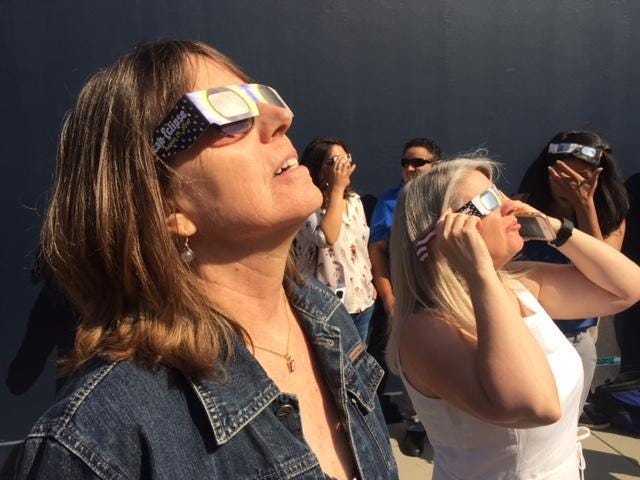Dispatch from the Moon: Soft Landing
"Moon at my shoulder / a constant inconstancy / immaculate evening sky"
This month our dispatch comes from the moon. Sally Ashton’s poem, “4.6 Billion years” landed in Mare Crisium on the Moon in the early morning hours of March 2. Sally and I first started corresponding after I encountered her term “the free line” in reference to prose poetry’s timespace. Her recent collection, Listening to Mars contains luminous “thought experiments otherwise known as poems”.
—Cassandra Atherton, Dispatches Editor
Haiku moon tonight
I lie awake until dawn
counting syllables
Lunar Codex: A time capsule of art headed to the Moon. Collected from writers, musicians, filmmakers, models, designers, and artisans from 262 countries and territories and 149 Indigenous nations from all across the planet, it includes one of my poems. Our works miniaturized, engraved on nickel-plated nanofiche placed aboard lunar landers as private payload, artifacts meant to bear witness to the human spirit and the culture of our time leaving a different kind of footprint, one that will last forever on the face of the Moon.
On a nighttime walk, our son’s partner from the Scottish Highlands asks if the sky is lit by light pollution or the Moon. She likes the glow, to be able to see the clouds at night. “It’s like our sky when there’s a full Moon,” she says. And I wonder. I can always see the clouds at night here.
Today’s Dictionary.com word is argent. The Moon’s argent glow.
Moonless winter sky
my flashlight beam askew
somewhere not nowhere
March 2, I watch Firefly’s Ghost Rider landing via live video broadcast after a 45-day journey to the Moon. The lander carries ten NASA payloads—science experiments—and the revived American dream to get the U.S. back up there. Also on board, like a stowaway, the Lunar Codex time capsule, part of a Lifeship Pyramid payload. The Firefly mission commentators call the lander “she.” The chosen landing site: Mare Crisium, the Sea of Crises. A perfect touchdown. Later video shows its final descent, the lander throwing up puffs of dust and rock before she settles on the surface with a little bounce. I rewatch the video as if I had a family member on board.
“This is the way this Administration keeps America first: dominating space,” says NASA’s acting director of the successful landing. “We’re doing this for the people.”
Crisis: a point of no return.
Moon over water
moonlight on the pool
poem on the Moon
7a.m., it’s semi-dark out. The waning gibbous Moon beams through my bedroom window. Argent, so I keep the bedside lamp off for the Moon’s last minutes framed there, crossing in and out from behind a wattle of the hornbeams’ bare branches. Waning gibbous—the right side now lost to the lunar night, Mare Crisium, the Ghost Rider lander, and my poem plunged into a deep cold blackout for the next 14 Earth days, the length of one long day on the Moon, the length of one equally long night. The lander—solar powered—sent back final images before shutting down forever, capturing the mysterious lunar sunset.
We talk about the Moon. “I moon-bathe,” my friend says, like a confession. “Inside or outside?” I ask her. “We have skylights. I lie on the couch and bathe in moonlight.”
The producer of the famous Golden Record hurtling through deep space on Voyager I likens the Lunar Codex enterprise to someone scrawling “Killroy was here” on the Moon. Ok. In light of the intended lunar mines and fueling stations, military installations and colonies, borders and industries, that’s saying something.
Moon at my shoulder
a constant inconstancy
immaculate evening sky
“What have they done to the Earth,” Jim Morrison sang in 1967.
What will become of the Moon?
“We must stay the course,” explains the Chair of the Senate Science, Commerce, and Transportation Committee. “An extreme shift in priorities at this stage would almost certainly mean a Red Moon, ceding ground to China for generations to come.”
Does “sacred” always infer divinity? No. An alternate meaning: “secured against violation.”
In scale, my poem’s nanofiche file is smaller than a poppy seed on the surface of the Moon, about 0.05 mm, and 238,855 miles away from us. Not even the Lunar Reconnaissance Orbiter could spot it. It’s titled “4.6 Billion Years” for the age of the Sun which itself will last another 5 billion years before it explodes and blows up the Moon, so like a time traveling nickel-plated sarcophagus, the poem will indeed last as forever as we’ll ever know. But you’ll need to bring a microscope along to read it.
Back in 1969, the first food eaten on the Moon was bacon. So far from home, temporary aliens, the astronauts loved bacon. Eating bacon, peaches, sugar cookie cubes, coffee, and pineapple-grapefruit juice inside the tiny Lunar Module in the Sea of Tranquility, comfort food for the first people on the Moon.
What makes us human?
Art, writing, bacon, conquest—
the Moon underfoot




